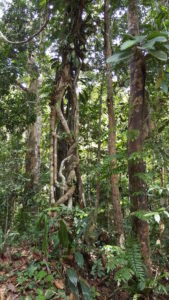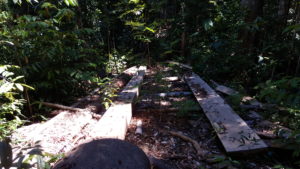What is the High Carbon Stock (HCS) Approach?
The HCS Approach is a method for distinguishing between valuable forests for protection, and degraded forests with low carbon and biodiversity values. The HCS Approach was developed for fragmented forest landscapes in the humid tropics. The HCS Approach uses satellite data and field observations to stratify vegetation into six different classes of forest.
The HCS Approach is an important decision support tool, which has been developed to assist agricultural producers identify and avoid high value forests when they are seeking new areas for expansion, so their development programs won’t contravene “no deforestation” commitments / policies (i.e. only low value degraded forests are developed).
How does the HCS Approach differ from the High Conservation Value (HCV) Approach?

The HCV Approach is the process in which HCVs are identified, managed and monitored. A HCV assessment involves stakeholder consultation, analysis of existing information and the collection of localised data where necessary. The initial aim of the HCV Approach is to identify areas that could provide:
- Species diversity
- Landscape level ecosystems
- Rare ecosystems / habitats
- Critical ecosystem services
- Community livelihood needs
- Cultural values
The HCV Approach and the HCS Approach are both conservation decision making tools used to identify and protect forests, and both approaches use community consultation, land cover mapping, desk top analysis and some field survey to delineate high value forests.
The real difference between the two approaches is in the way they stratify vegetation classes. The HCV Approach stratifies vegetation based on ecosystem attributes and function, while the HCS Approach stratifies vegetation based on potential carbon stock and patch viability.
The evolution of HCS

A new HCS Approach toolkit was released in May 2017, following extensive stakeholder consultation and field trials. The new approach incorporates other conservation decision making tools such as HCV and Free, Prior and Informed Consent (FPIC).
It is expected that the HCS Approach will continue to expand beyond the palm oil and timber industries, and be adopted by rubber and soy producers who are planning future forest conversion.
The role of HCS in the Landscape Approach
Land use planning at a landscape level is unlikely to use the full HCS Approach, given the detailed field survey required to stratify vegetation classes. Incorporating HCS Approach principles into any land use planning process is likely to generate a valuable perspective for landscape scale decisions. Stratifying landscapes based on potential carbon stock, should assist the land use planning process identify and prioritise viable areas of high value forest.



